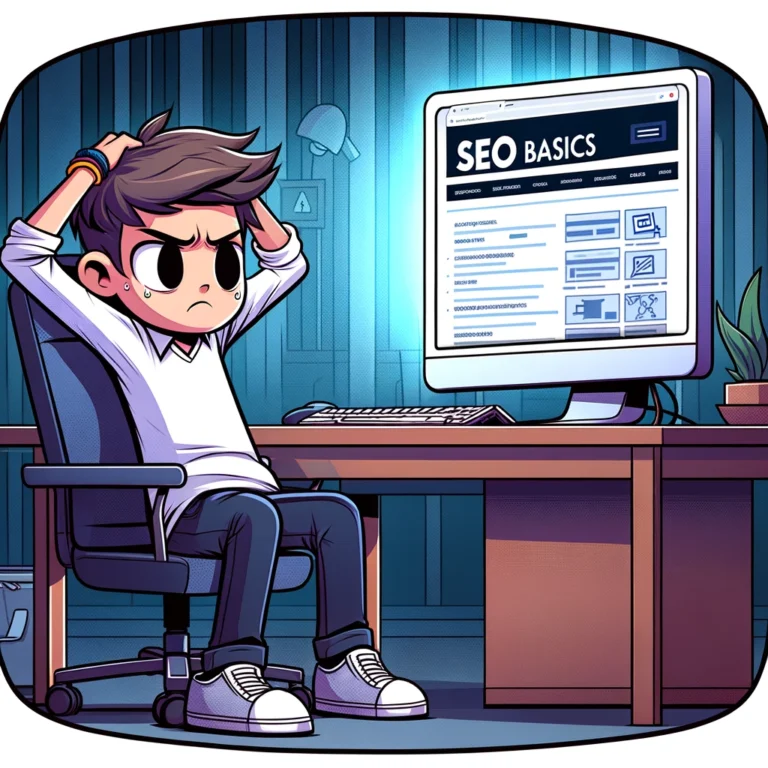Search Engine Optimization (SEO) often seems wrapped in mystery, not just because of its ever-changing nature, but also due to its technical aspects that may initially seem daunting to beginners. However, implementing and monitoring basic SEO strategies doesn’t require you to be an expert from the get-go. In fact, several straightforward experiments can be performed by anyone with a basic understanding of how websites work. These experiments are not only educational, but they’re also practically free and can provide valuable insights into how you can boost your site’s search engine rankings.
Start with Keyword Optimization
Keywords are the cornerstone of SEO. They are essentially the terms and phrases that users enter into search engines. By integrating relevant keywords into your site’s content, you can make your pages more visible to these searches. Begin by brainstorming a list of keywords relevant to your content. Imagine what potential visitors might type into Google to find your page. Tools like Google’s Keyword Planner can help you find terms and gauge search volumes, although simply using Google Search and observing the autocomplete results can be highly informative as well. Once you’ve selected your keywords, the next step is to integrate them naturally into your website’s content. This includes titles, meta descriptions, headers, and body text. A critical aspect here is the emphasis on “naturally.” Over-stuffing keywords can lead to penalties from search engines, as it degrades the quality of your content and user experience.
Monitor Page Load Speed
Page load speed is a crucial ranking factor for search engines like Google. A faster site provides a better user experience and, thus, ranks higher in search results. You can use tools like Google’s PageSpeed Insights to analyze the load time of your pages and get specific recommendations for improvement. After you have your baseline metrics, experiment with reducing file sizes, optimizing images, and eliminating unnecessary scripting. Retest your page speed after each adjustment and observe any changes in your site’s performance metrics.
Leverage the Power of Internal Linking
Internal linking—linking to other pages on your website—helps search engines understand the structure of your site and distribute page authority across your domain. It also enhances the user experience by making it easier for visitors to navigate your website and discover more content. Start integrating internal links into your higher authority pages to spread that authority to lower-ranked pages. Try linking from high-traffic pages to pages that you want to improve performance on. Monitor your traffic to see if the linked pages benefit from increased user engagement and better rankings.
Assess Your Content’s Impact
Updating old content is a neglected strategy that can yield considerable benefits. Search engines favor up-to-date and relevant content. Go through older posts or pages and assess what could be updated, expanded upon, or improved. Add recent information, revise outdated details, and enhance readability to refresh these pages. Set goals for each content piece you update, such as increased traffic or higher conversion rates, and use analytics to track the performance over time. This not only helps in maximizing the utility of existing resources but also in maintaining the relevancy of your site.
Regularly Check Your Analytics
Use tools like Google Analytics to monitor your site’s traffic and performance regularly. Observing which pages draw more traffic and identifying where your visitors are coming from can provide insights into what’s working and what’s not. Notice any patterns? Are certain types of content performing better? What about the traffic sources—are most of your visitors coming from organic search, social media, or direct visits?These observations can guide your future SEO experiments, leading to more targeted strategies that are likely to succeed based on past performance. —By performing these simple SEO experiments, not only do you start to demystify the process, but you also gain hands-on experience that can prove invaluable for more advanced SEO efforts. Experimentation is key in SEO, given how dynamic the field is, with search engines continually updating their algorithms. The knowledge you gain can provide you with the agility to adapt your strategies swiftly and maintain a resilient online presence.

Experiment with Title Tag and Meta Description Variations
The title tag and meta description of your web pages are critical components that affect both your search engine rankings and click-through rates (CTR). These elements appear in search engine results and are often the first interaction potential visitors have with your web content. Thus, tweaking these can lead to visible changes in your site’s performance. Begin by creating two to three variations of the title tag and meta description for some of your key pages. Make sure each version clearly describes the page’s content but with slight variations in phrasing or keyword inclusion.
For example, if the original title of a blog post is “10 Tips for Gardening Success,” a variation could be “Top Gardening Tips to Enhance Your Outdoor Space.”Implement these variations one at a time, allowing each to run for a set period (e.g., one month) while closely monitoring the impact on your page’s CTR and rankings. Tools like Google Search Console can be invaluable here, offering insights into how often your pages are appearing in search results and the rate at which people click through to your site. This sort of A/B testing allows you to refine your approach to meta tags and find the most effective combinations for engaging visitors and improving your SEO results. Keep a record of changes made and the results of each, as this documentation will help you apply successful strategies to other parts of your website.
Analyze User Engagement and Feedback
As you experiment with different title tag and meta description variations, it’s crucial to pay close attention to user engagement and feedback. This involves not just looking at metrics like CTR and rankings, but also diving deeper into how users are interacting with your website after they click through from the search results. Analyzing behaviors such as the duration of page visits, bounce rates, and the path visitors take through your site can provide insights that are not immediately apparent through CTR metrics alone. Utilizing user feedback tools such as surveys, feedback forms, or even direct comments can also offer valuable information on how your title tags and meta descriptions influence user expectations and satisfaction.
Feedback like “The article wasn’t what I expected” or “I thought this would cover more about X topic” might suggest that your meta descriptions are not accurately reflecting the content of your pages, or perhaps they’re promising more than the page delivers. Furthermore, integrating heatmapping tools or session replay software can visually show where users are focusing and how they move around your pages. If users seem to scroll past sections quickly or exit from a page too soon, it could indicate that the content isn’t meeting their needs as anticipated by the title or description. Involving these qualitative measures provides a comprehensive view of how effective your variations are from both a technical SEO standpoint and a user experience perspective. This dual lens approach ensures that optimizations cater not only to search engines but also to the people who are reading your content.
Leveraging Insights for Continued Success
In the pursuit of mastering SEO and user satisfaction, the reflection on user engagement and feedback is not just useful, but necessary. As we explore different tactics through the title tags and meta descriptions we create, it’s essential to craft these elements not only for the sake of search engine algorithms but with a genuine consideration for user experience. This ensures that the adjustments you make are genuinely beneficial and not just theoretically optimized. As you incorporate the data and insights from user interactions and feedback, remember that this process is cyclical. Regular review and adjustments based on what you learn will keep your content dynamic and engaging. It’s about creating a dialogue with your audience, where their responses and behaviors guide your next steps. Are they finding what they expect? Is the content fulfilling their needs? How can you enhance their experience? These are continuous questions that should drive your SEO strategy.
By fostering an environment where user feedback influences your SEO choices, you contribute to a more user-centric web presence. This not only boosts your SEO success but also builds trust and credibility with your audience. They will know that behind every search result, there is a commitment not just to rank well but to provide value and relevance. Thus, continue to listen, adapt, and evolve. The landscape of SEO and user expectations is always changing, and staying attuned to these shifts is what will keep your content both visible and valuable. Remember, the true mark of success in digital spaces is not just visibility but the ability to genuinely engage and satisfy the curiosity and needs of those who come clicking.
References:
- Ahrefs Blog. (2022). DIY SEO: 5 Key Strategies You Can Implement Without Expert Help.
- Google Search Central. (2021). Beginner’s Guide to SEO.
- Moz. (2022). The Beginner’s Guide to SEO: Search Engine Optimization.
- Patel, N. (2021). How to Conduct a Basic SEO Audit for Your Website. Neil Patel’s Blog.
- Search Engine Journal. (2023). SEO for Beginners: An Introduction to SEO Basics.
- Semrush. (2022). Simple SEO Tests You Should Try to Improve Your Rankings. Semrush Blog. Retrieved from [https://www.semrush.com/blog/simple-seo-tests/](https://www.semrush.com/blog/simple-seo-tests/)
- Yoast. (2023). SEO Basics: A Beginner’s Guide.



